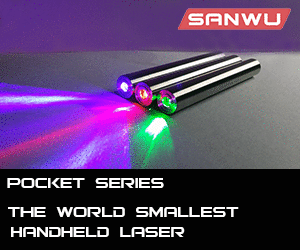The temperature shift in florescence wavelength is probably due to the increasing viscosity of the solvent and the effect on vibrational states that are in turn based on the flexing of the dye molecule.
https://books.google.com/books?id=6rTrCAAAQBAJ&pg=PA171&lpg=PA171&dq=fluorescence+efficiency+with+temperature+dye+laser&source=bl&ots=yVkkHfKPA-&sig=I5nV61m8Za1EvuNehv6zFOJ_2ag&hl=en&sa=X&ved=0ahUKEwiAl8nIuYzKAhUCPz4KHbUIBZUQ6AEINjAC#v=onepage&q=fluores
I can see why we'd push SS dye, lower toxicity and a heck of a lot less work and mess.
I work with dyes a lot and I think this is overrated. If you treat the dye cell and the interconnects with anything approaching the care that you would use to handle a multi thousand dollar laser crystal the leakage will be rare

These solid state dyes wear out. Unlike a SS crystal, even if you do not damage the medium, the dye degrades due to the exposure to pump light. This occurs on a time frame that matters. Energy of mega to even giga joule/mole is typical, but when you do the math and realize how small a fraction of a mole a "solid state" dye laser contains and that it can't be refreshed then liquid state becomes attractive.
A bit OT but dyes can also be flashlamp pumped...maybe if I get around to it this winter break I'll see if I can optically pump some laser dyes with photoflash powder and see if I can get it to lase.
Have you ever tried to pump a dye with a flash lamp? It's surprisingly demanding. It is not hard, there are YouTube videos of it being done (including my own), but the magic is in the peak energy. The eye will not distinguish a 1kJ,usec and a 1kJ,msec pulse although the usec pulse, which has 1000 times the peak energy, may look a little bluer, the appearance is subtle. Photo flash powder will be very slow and as a chemical reaction will be likely to be much cooler than the 8,000 to 20,000K temperature required of a flash lamp that can pump a dye.
The dyes will florescence over an extended range as will a ti sapphire, but if the cavity optics are narrow band or if you insert a BRF or even a dispersing prism you can force the laser, as an amplifier, to output close to the same amount of energy wherever you want within that band. You can also blend dyes( the xanthenes are used this way all the time) or replace a dye solution with another and select other bands to amplify.
For laser pumping the harmonics are needed and the Q switching helps a lot. Without Q switching you need to focus a CW laser such as an ion or a 532 to a really tiny spot, microns across and then align the cavity optics to cause the dye laser beam to coincide with this tiny place to obtain efficient pumping. Fluence of 20-30kW/cm2 is about a minimum and the best flash lamp systems might get to 100kW/cm2 while a Q switched pump laser will easily reach 2MW/cm2.
My link is stuck. Try to Google tempreture effect on flouresence of laser dyes. There are a lot of hits.



